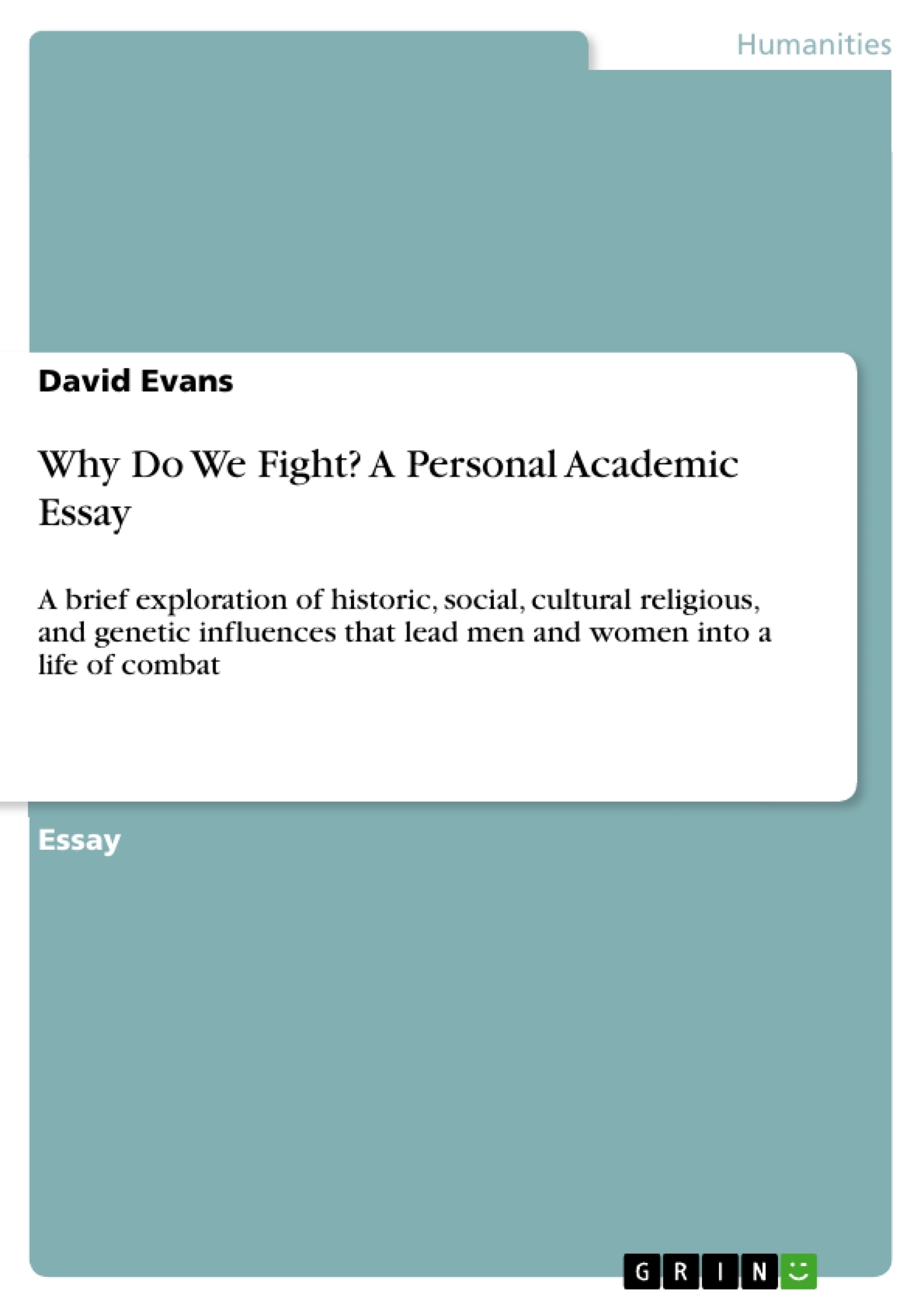In this paper, we will explore the social, cultural, religious and even genetic influences that drive the warrior culture and mindset. By blending historical examples, research papers, and my own personal experience I hope to shed some light on the question “Why do we fight?”
It is well known that all great empires were built on the backs of men and women who were willing to fight and die for someone else. The Romans, the Mongolians, even the United States of America all rose to power because they had large armies full of strong warriors. What is it that makes these people warriors? What can lead someone to cast aside safety and security, leave their friends and family behind, and lead a life that will almost certainly end violently?
As a United States Army Veteran of both the Afghan and Iraqi wars, this is a subject that has always intrigued me. When you are thousands of miles from home fighting an enemy you know very little about you begin to wonder, “How did I get here?”. Imagine if you will that instead of heading off to college or starting an entry level job the first time you left home you flew to a military base, had a rifle put in your hands, and had extremely dangerous people teach you how to kill with it. Instead of studying for exams you study combat manuals, instead of going on spring break you go to a war zone. What the hell would make someone do such a thing?
Inhaltsverzeichnis (Table of Contents)
- Foreword
- Part I - Society
- Part II - Culture
- Part III - Religion
- Part IV - Family
Zielsetzung und Themenschwerpunkte (Objectives and Key Themes)
This paper explores the social, cultural, religious, and genetic influences that drive the warrior culture and mindset. It aims to shed light on the question "Why do we fight?" by blending historical examples, research papers, and personal experience.
- The impact of media on glorifying war and its influence on combat occupations.
- The role of culture in shaping warrior mindsets, with examples from historical societies.
- The impact of religion on motivating and justifying war, using the example of the Crusades and the current conflict in the Middle East.
- The influence of holidays on celebrating war and warriors.
Zusammenfassung der Kapitel (Chapter Summaries)
- Part I - Society: This chapter discusses the media's portrayal of war and its potential influence on recruitment. It explores the idea that glorifying war in media could entice people into serving in the military, law enforcement, and other dangerous professions. The chapter also considers the possibility that war stories are meant to prepare people for the horrors of combat.
- Part II - Culture: This chapter examines cultures that were built around war, such as the Spartans, Samurai, and Medieval Knights. It highlights how these cultures became influential through their use and study of violence. The chapter also explores the impact of holidays and celebrations that focus on war and soldiers, suggesting they may serve to encourage people into service or express gratitude and guilt.
- Part III - Religion: This chapter examines the role of religion in justifying and motivating war, using the example of the Crusades. It argues that the Crusades were a means for the Catholic Church to extend its reach and acquire new lands, using the guise of "God's will" to avoid scrutiny. The chapter also discusses the current conflict in the Middle East as a holy war and highlights the influence of religious extremism.
Schlüsselwörter (Keywords)
Warrior culture, combat occupations, media influence, historical cultures, religious extremism, holy wars, cultural influence, holidays, war, violence.
- Quote paper
- David Evans (Author), 2016, Why Do We Fight? A Personal Academic Essay, Munich, GRIN Verlag, https://www.grin.com/document/345216



